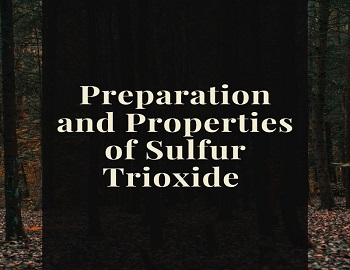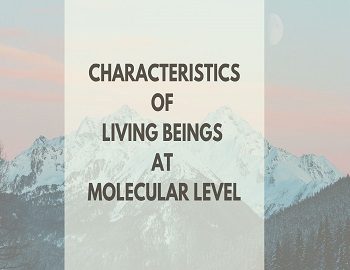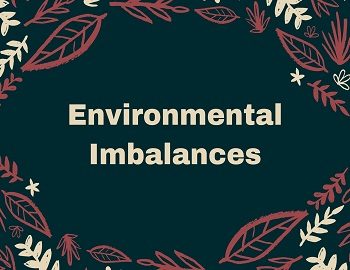Table of Contents
What is Solid Waste Management?
Solid Waste Management is associated with the control of waste generation, its storage, collection, transfer and transport, processing, and disposal in a manner that is in accordance with the best principles of public health, economics, engineering, conservation, aesthetics, public attitude, and environmental considerations. In general, solid waste management system has socioeconomic and environmental dimensions.
Objectives of Solid Waste Management:
The objectives of Solid Waste Management involves the following aspects-
- Protection of environmental health.
- Promotion of environmental quality.
- Supporting the efficiency and productivity of the economy.
- Generation of employment and income.
Sources of Urban and Industrial Wastes:
Municipal solid waste:
The term municipal solid waste (MSW) is generally used to describe the most of the non-hazardous solid waste from a city, town or village that requires routine collection and transport to a processing or disposal site.
Sources of municipal solid waste include private homes, commercial establishments, and institutions, as well as industrial facilities. However, municipal solid waste does not include wastes from industrial processes, construction, and demolition debris, sewage sludge, mining wastes, or agricultural wastes.
Municipal solid waste contains a wide variety of materials. It can contain food waste (like vegetable and meat material, leftover food, eggshells, etc.) which is classified as wet garbage as well as paper, plastic, tetra packs, plastic cans, glass bottles, newspaper, cardboard boxes, metal items, aluminum foil, wood pieces, etc., which is classified as dry garbage.
Hazardous wastes:
The modern society produces large quantities of hazardous waste that are generated by-
- Chemical manufacturing companies.
- Petroleum refineries.
- Paper mills.
- Smelters, and other industries.
Hazardous wastes are those that can cause harm to humans or the environment. Wastes are normally classified as hazardous wastes when they cause or significantly contribute to an increase in mortality, or an increase in serious irreversible or incapacitating reversible illness, or pose a substantial present or potential hazard to human health or the environment when improperly treated, stored, transported or disposed of.
A waste is classified as a hazardous waste if it exhibits any of four primary characteristics based on the physical or chemical properties of toxicity, reactivity, ignitability and corrosivity. In addition to this, waste products that are either infectious or radioactive are also classified as hazardous.
- Toxic wastes are those substances that are poisonous even in very small or trace amounts. Some may have an acute or immediate effect on humans or animals, causing death or violent illness. Others may have a chronic or long-term effect slowly causing irreparable harm to the exposed persons.
- Reactive wastes are those that have a tendency to react vigorously with air or water, are unstable to shock or heat, generate toxic gases, or explode during routine management. Example- gunpowder, nitroglycerine, etc.
- Ignitable wastes are those that burn at relatively low temperatures (less than 60°C) and are capable of spontaneous combustion during storage, transport, or disposal. Example- gasoline, paint thinners, and alcohol.
- Infectious wastes include human tissue from surgery, used bandages and hypodermic needles, microbiological materials, etc.
- Corrosive wastes are those that destroy materials and living tissue by chemical reaction. Example- acids and bases.
- Radioactive waste is basically the output from the nuclear power plants and can persist in the environment for thousands of years before it decays appreciably.
Effects of Solid Wastes:
Municipal solid wastes heap up on the roads due to improper disposal system. People clean their own houses and litter their immediate surroundings which affect the community including themselves. This type of dumping allows biodegradable materials to decompose under uncontrolled and unhygienic conditions. This produces foul smell and breeds various types of insects and infectious organisms besides spoiling the aesthetics of the site.
Industrial solid wastes are a source of toxic metals and hazardous wastes, which may spread on land and can cause changes in Physico-chemical and biological characteristics thereby affecting the productivity of soils. Toxic substances may leach or percolate to contaminate the groundwater.
In refuse mixing the hazardous wastes are mixed with garbage and other combustible waste. This makes segregation and disposal all the more difficult and risky. Various types of wastes like cans, pesticides, cleaning solvents, batteries (zinc, lead, or mercury), radioactive materials, plastics are mixed up with paper, scraps, and other non-toxic materials which could be recycled. Burning off some of these materials produces dioxins, furans, and polychlorinated biphenyls, which have the potential to cause various types of ailments including cancer.
Control Measures of Urban and Industrial Wastes:
Integrated Waste Management:
An integrated waste management strategy includes three main components-
- Source Reduction.
- Recycling.
- Disposal.
Source Reduction:
Source reduction is one of the fundamental ways to reduce waste. This can be done by using less material when making a product, reusing products on site, designing products or packaging to reduce their quantity. On an individual level, we can reduce the use of unnecessary items while shopping, buy items with minimal packaging, avoid buying disposable items and also avoid asking for plastic carry bag.
Recycling:
Recycling is reusing some components of the waste that may have some economic value. Recycling has readily visible benefits like the conserving resources, reducing energy used during manufacture, and reducing pollution levels. Some materials such as aluminum and steel can be recycled many times. Metal, paper, glass, and plastics are recyclable. For example- Crushed glass (cullet) reduces the energy required to manufacture new glass by 50%. Cullet lowers the temperature requirement of the glassmaking process thus conserving energy and reducing air pollution.
Disposal:
Disposal of solid waste is done most commonly through-
- Sanitary Landfill.
- Incineration.
Sanitary Landfill:
In a sanitary landfill, garbage is spread out in thin layers, compacted and covered with clay or plastic foam.
In the modern landfills the bottom is covered with an impermeable liner, usually several layers of clay, thick plastic, and sand. The liner protects the groundwater from being contaminated due to the percolation of leachate. Leachate from the bottom is pumped and sent for treatment. When the landfill is full it is covered with clay, sand, gravel and topsoil to prevent seepage of water. Several wells are drilled near the landfill site to monitor if any leakage is contaminating ground water. Methane produced by anaerobic decomposition is collected and burnt to produce electricity or heat.
Incineration:
Incineration is a process of energy recovery through thermal treatment. It is a chemical reaction that occurs when carbon, hydrogen, and other elements in the waste mix with oxygen in the combustion zone and generate heat/steam, which is later converted to electricity also. Most of the municipal solid waste generated incineration currently practice energy recovery in the form of steam, which is used either to drive a turbine to generate electricity or directly for heating or cooling.
The risks of incineration, however, involve air-quality problems and toxicity, and disposal of the fly and bottom ash produced during the incineration process. For incineration of materials, it is better to remove batteries containing heavy metals and plastic containing chlorine before burning the material. Prior removal of plastics will reduce emissions of dioxins and polychlorinated biphenyls (PCBs).
Biological conversion of Solid Waste:
Composting is one of the important components of solid waste management. It is a form of source reduction or waste prevention, as the materials are completely diverted from the disposal facilities and require no management or transportation. It is a biological process.
Biogasification is another biological transformation process of solid waste. This gasification is an anaerobic process.
The compost produced and slurry from biogas plant is often used as a soil amendment in a variety of applications, after ascertaining the quality of the product.









Comments (No)